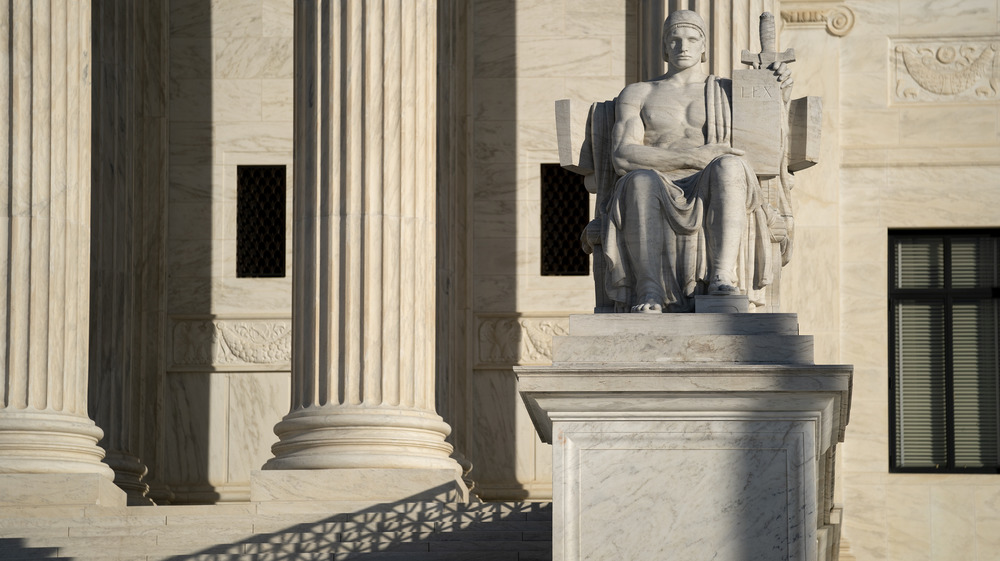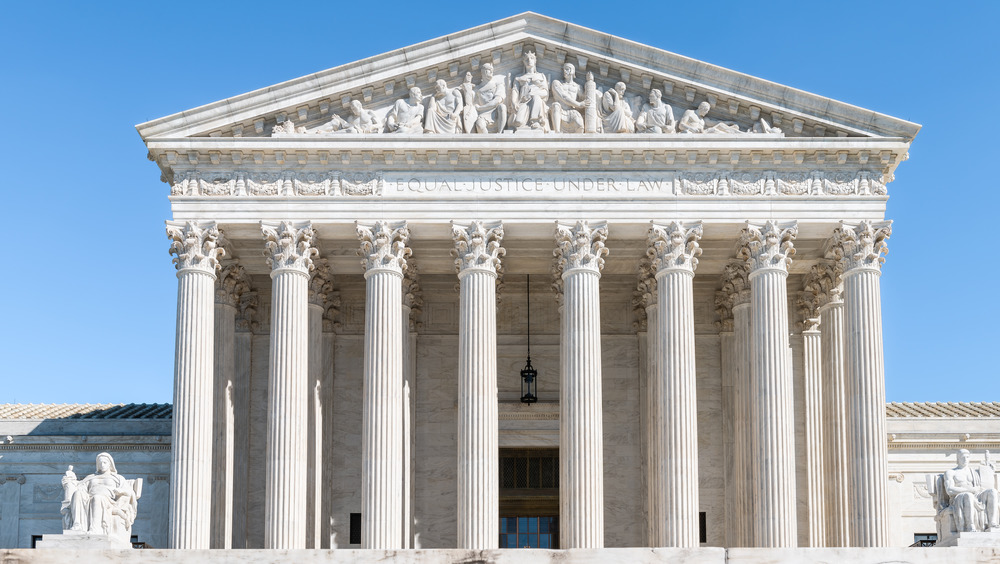The Real Reason We Have Nine Supreme Court Justices
For more than 150 years, the Supreme Court has had nine justices. But it wasn't always that way. The Constitution established the Supreme Court, stating that the president should have the power to appoint the justices, and even declared that a "Chief Justice shall preside" in the instance of a presidential impeachment (although it doesn't otherwise specify that a Chief Justice should exist). "The judicial Power of the United States, shall be vested in one supreme Court, and in such inferior Courts as the Congress may from time to time ordain and establish," the Constitution reads (as posted at the National Constitution Center). The rest — including the number of justices — was left for Congress to decide.
Within months of forming the government under the new Constitution, Congress passed the Judiciary Act of 1789. It outlined an entire court system and declared that the Supreme Court should be comprised of six judges: one chief justice and five associate justices, "any four of whom shall be a quorum, and shall hold annually at the seat of government two sessions, the one commencing the first Monday of February, and the other the first Monday of August," the Judiciary Act read (at the Library of Congress).
Congress agreed on six because the justices would have to preside over federal circuit courts. Each state had its own circuit court and Congress wanted to minimize each judge's jurisdiction and travel, so they split the circuit courts into three regions, assigning two justices to each region, according to the Supreme Court's history.
Seats on the Supreme Court changed mostly because of partisan politics
Over the next 80 years, Congress changed the maximum number of Supreme Court justices several times for practical and political reasons. President John Adams and his Federalist Congress passed the Judiciary Act of 1801, which reduced the Court to five justices as a way of handcuffing incoming Democratic-Republican President Thomas Jefferson's power in making appointments to the court, The Washington Post notes. The following year, Jefferson and Congress had passed another act that returned the number of Supreme Court justices to six. In 1807, Jefferson and Congress pushed through a seventh federal court circuit after adding another circuit court.
In early 1837, as the nation grew, President Andrew Jackson increased the number of justices by two after Congress added two new circuit courts. Abraham Lincoln then briefly increased the number of justices to 10 in order to add another abolitionist vote, but Congress reduced it to seven in 1866 to keep Andrew Johnson from filling seats with Democrats. As soon as a Republican succeeded Johnson, Congress recalibrated the number of Supreme Court justices back to the nine we've known ever since.
That doesn't mean presidents haven't tried. In the 1930s, President Franklin D. Roosevelt tried to increase the Supreme Court to 15 as a strategy to push his New Deal through the court. The Senate shot down the measure by a stunning 70 to 20 votes, according to the National Constitution Center. Increasing the court size for purely political purposes is now negatively viewed as "packing the court."

